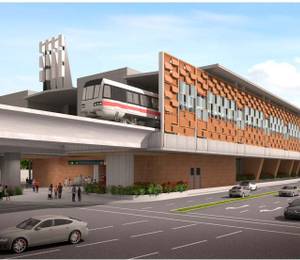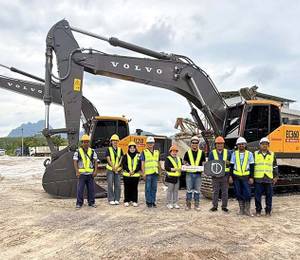Global construction consultant Linesight has published its latest Construction Market Insights for Asia Pacific (APAC) & GCC. The report reveals that construction growth in APAC has proven to be resilient to the volatility of the wider global economy and construction output continues to gain momentum across the region.
Activity in APAC’s construction industry remains robust, fuelled by significant investments in the critical sectors of infrastructure, data centres, semiconductors and renewable energy. India leads the way, while key Southeast Asian construction markets such as Singapore and Malaysia are expected to perform strongly over the next three years.
On a macro level, APAC is set to account for 60% of global gross domestic product (GDP) growth in 2024. This positive trajectory is expected to continue in 2025 amidst favourable monetary conditions. The GDP growth has also been revised up to 4.4% from 4.3%.
The APAC markets specified in the report include Malaysia, Singapore, South Korea, Taiwan, India, Japan and Australia, while the GCC markets consist of Saudi Arabia and the UAE.
Inflationary pressures may rise
While inflation has started to ease after a period of turbulence, construction inflationary pressures may increase next year. This is largely driven by persistent labour shortages, increased construction activity and geopolitical uncertainties in the Middle East.
Labour remains a significant cost factor due to the shortage of skilled workers, a challenge that is more pronounced in developed countries. Coupled with continued strong demand for projects, contractors are experiencing capacity constraints and there remains high levels of pressure on all fronts to deliver on pipeline projects.
Following spikes in the first half of 2024, commodity prices have broadly stabilised, but the fluctuating prices of metals remains a concern. Prices of copper and aluminium are higher than they were in 2023 due to supply chain challenges and rising import costs. Strong demand from renewable energy, power and infrastructure sectors is expected to keep upward pressure on prices.
Some market highlights
India’s construction industry is projected to grow in 2024, driven by robust investments from both public and private sectors in manufacturing, data centres, semiconductors, energy and transportation infrastructure. Over the 2025 to 2027 period, activity in the sector is expected to be fuelled by ongoing investments in green energy projects as well as developments in roads, railways and housing.
The construction industry growth in Singapore is expected to slow, due to soft external demand and a decline in construction contracts issued in the first quarter of 2024. However, between 2025 and 2027, the industry is forecast to grow, driven by investments in transport, renewable energy and manufacturing, including the S$21.9 billion high-speed railway project linking Kuala Lumpur to Singapore.
The Malaysian construction industry is projected to grow in 2024, driven by significant investments in transport infrastructure and renewable energy projects. From 2025 to 2027, the sector is expected to see increased export activities and investments in manufacturing and housing infrastructure developments.
Key commodity prices
Copper demand is heavily driven by the renewable energy transition across multiple markets including Singapore. Investments in semiconductors and energy storage will also further boost demand, and copper prices in Singapore are anticipated to increase ≥ 1% – < 5% between Q1 2025 and Q2 2025.
Steel rebar and steel flat prices are expected to inch downwards in Q4 2024 due to weaker iron ore prices and soft global demand. While prices are anticipated to level off between Q1 2025 and Q2 2025, infrastructure and mega projects are expected to drive long-term price increases.
Cement and concrete prices exhibit similar trends and remain elevated. Rising project demand and costs associated with labour, energy and transport have caused prices to inch upwards but a slight easing in prices is expected between the first two quarters of 2025.
“2024 has been a strong year of growth for the APAC construction industry driven by significant capital injections by both private and public sectors. Despite labour shortages and some volatility in metal prices, the outlook for the industry in 2025 continues to be vibrant as APAC paves the way in the global construction arena, amid high levels of demand and activity in mission-critical sectors,” said John Butler, managing director of Asia Pacific at Linesight.
The report can be read in full here.











